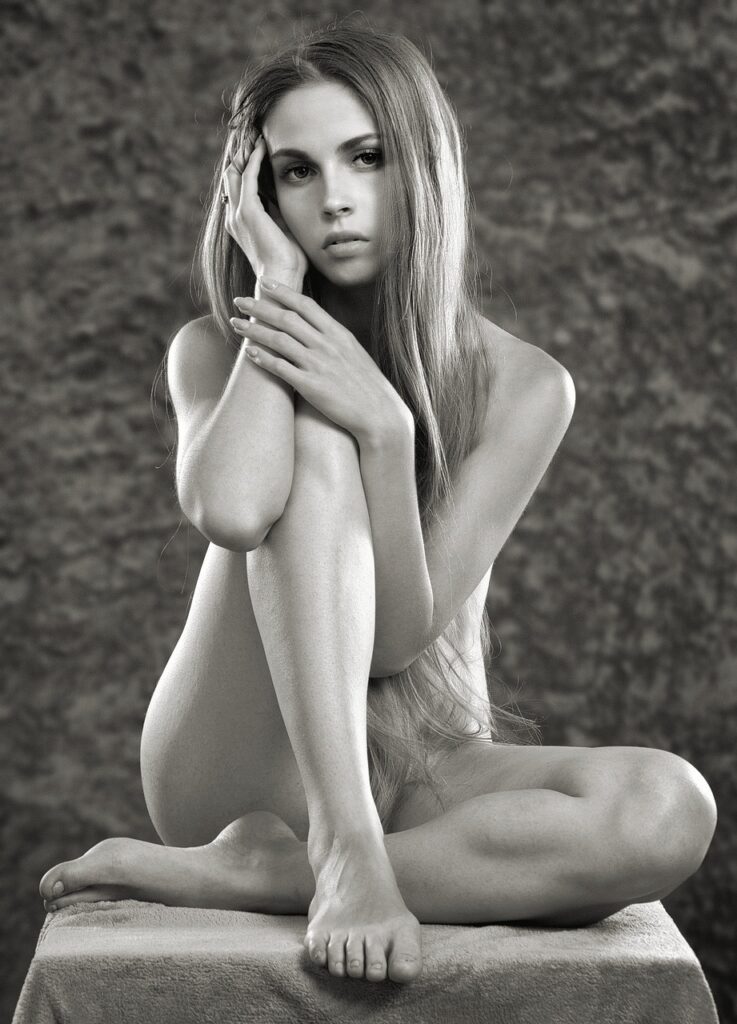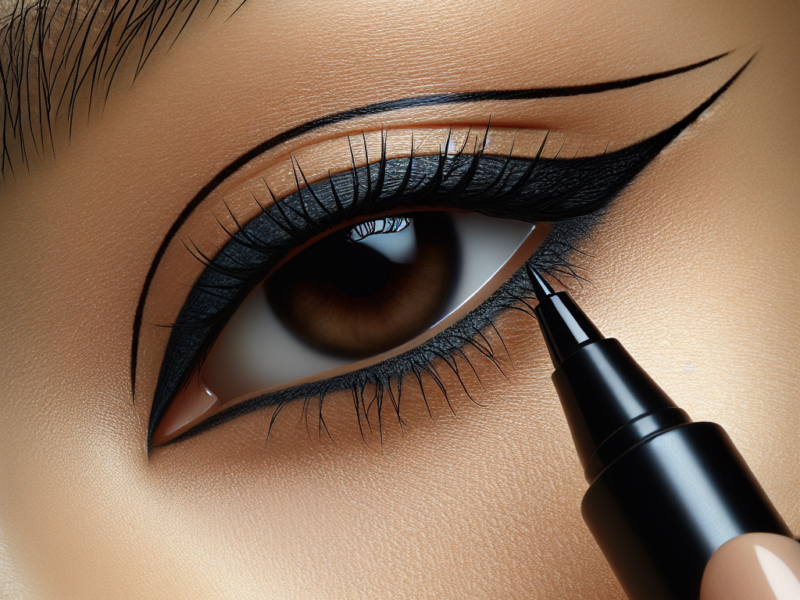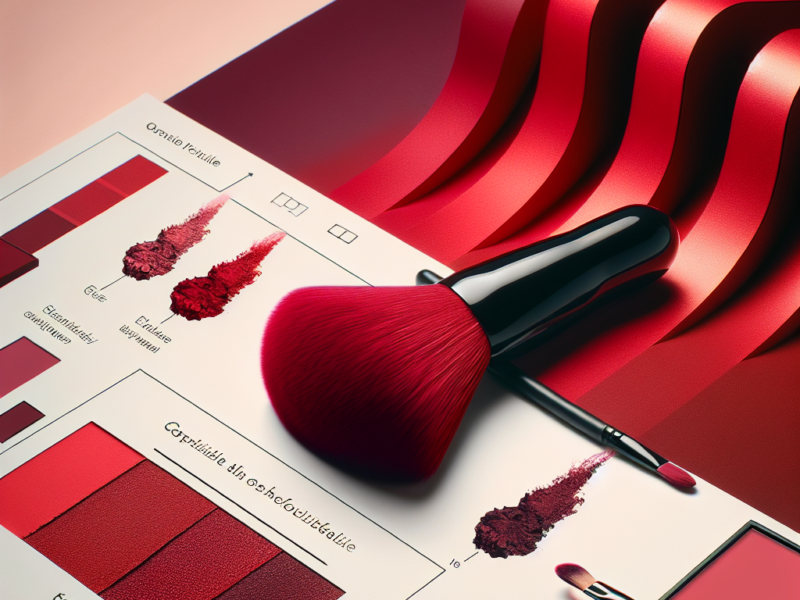Are you tired of your makeup melting off and leaving you with a shiny face by midday? Look no further, because we’ve got you covered! In this article, we will show you how to achieve a flawless, matte finish for your makeup using powder. Say goodbye to a greasy complexion and hello to a long-lasting, impeccable look that will keep you feeling confident all day long. So, grab your brushes and get ready to learn the secrets of setting your makeup with powder!
Prepping your skin

Check here to see how this cup of morning coffee will bright your whole day!!
Cleansing your face
Before applying any makeup, it’s essential to start with a clean canvas. Cleansing your face not only removes dirt and impurities but also helps to prepare your skin for makeup application. Use a gentle cleanser suitable for your skin type and cleanse your face using circular motions. Rinse thoroughly with water and pat your skin dry with a clean towel.
Applying moisturizer
After cleansing, the next step is to apply a moisturizer. Regardless of your skin type, moisturizing is crucial as it helps to hydrate your skin, keeping it supple and creating a smoother surface for makeup application. Choose a moisturizer that suits your skin type – whether it’s oily, dry, or combination – and apply it evenly over your face and neck. Allow the moisturizer to absorb fully before moving on to the next step.
Using a makeup primer
To achieve a flawless and long-lasting makeup look, using a makeup primer is key. A primer helps to create a smooth surface and allows your foundation to adhere better to your skin. It also helps to minimize the appearance of pores and fine lines. Choose a primer that suits your skin type – whether it’s mattifying for oily skin or hydrating for dry skin – and apply it all over your face, focusing on areas where your makeup tends to fade or crease.
Choosing the right powder
Understanding your skin type
Before selecting a powder, it’s crucial to understand your skin type. Is your skin oily, dry, or combination? Knowing your skin type will help you choose a powder that addresses your specific needs. If you have oily skin, opt for a powder with oil-absorbing properties, while those with dry skin may benefit from a more hydrating formula.
Finding the right shade
Choosing the right shade of powder is essential to ensure a natural finish. The shade should match your skin tone closely, so it blends seamlessly without looking too light or dark. Test the powder on your jawline or inner wrist to see if it matches your skin tone. If you’re having trouble finding the right shade, it’s often safer to go with a slightly lighter shade than a darker one.
Selecting the right formula
Powder comes in various formulas, including loose powder and pressed powder. Loose powder allows for more control and is ideal for setting the makeup, while pressed powder is more convenient for touch-ups throughout the day. Consider your preferred application method and the level of coverage you desire when selecting a powder formula.
Applying foundation
Choosing the right foundation
Before applying powder, it’s crucial to have a good foundation base. Choosing the right foundation is essential to ensure a smooth and even complexion. Consider your skin type and desired coverage – whether it’s sheer, medium, or full – when selecting a foundation. Test the foundation on your jawline or inner wrist to find a shade that matches your skin tone perfectly.
Applying foundation evenly
To achieve a flawless foundation application, start by dotting the foundation onto your forehead, nose, cheeks, and chin. Use a foundation brush, sponge, or your fingers to blend the foundation outwards, ensuring an even coverage. Pay attention to areas that need extra coverage, such as redness or blemishes, and blend the foundation gently for a seamless finish.
Blending techniques
To achieve a natural and blended finish, it’s essential to use the right blending techniques. If you’re using a brush, use circular motions or a stippling motion to blend the foundation into your skin. If you’re using a sponge, gently bounce or press the sponge onto your skin to blend the foundation. Remember to blend the foundation into your hairline, jawline, and neck to avoid any visible lines of demarcation.
Picking the right powder brush
Understanding different brush types
When it comes to selecting a powder brush, understanding the different brush types can make a significant difference in your makeup application. There are various brushes available, such as powder brushes, stippling brushes, and kabuki brushes. Each brush type has its own purpose and can provide different levels of coverage. Do some research or seek advice from makeup professionals to find the brush that suits your needs.
Choosing the appropriate size
The size of your powder brush can affect how the powder is applied and blended onto your skin. A larger brush may give a more diffused application, while a smaller brush can provide more precise and controlled coverage. Consider the size of the areas you’ll be applying powder to, such as the whole face or targeted areas, to determine the appropriate brush size for your needs.
Opting for synthetic or natural bristles
Powder brushes can be made from synthetic or natural bristles. Synthetic brushes are typically more affordable and easier to clean, making them suitable for those with allergies or ethical concerns regarding animal products. On the other hand, natural bristles are known for their softness and ability to pick up and distribute product evenly. Consider your preferences and values when choosing between synthetic and natural bristles.
Setting your makeup with powder

Selecting the right setting powder
Setting powder helps to lock your foundation in place, control oil, and provide a matte finish. When selecting a setting powder, consider your skin type and desired finish. If you have oily skin, opt for a powder with oil-control properties, while those with dry skin may prefer a hydrating or illuminating powder. Test the powder on the back of your hand or wrist to check if it matches your skin tone before using it on your face.
Using a loose powder
To set your makeup, apply a loose powder using a large fluffy brush. Dip the brush into the powder, tap off any excess, and gently sweep the powder over your face, focusing on areas that tend to get oily or where your makeup tends to crease. Use a pressing motion rather than rubbing the brush across your skin to avoid disturbing your foundation.
Using a pressed powder
Pressed powder is ideal for touch-ups throughout the day to combat shine or oiliness. Carry a compact with a pressed powder and a small powder brush or sponge for quick touch-ups on the go. Gently press the powder onto the areas of your face that need extra mattifying or oil-absorbing, ensuring a seamless blend with your existing makeup.
Applying powder to the face
Starting with the T-zone
When applying powder to the face, it’s best to start with the T-zone – the forehead, nose, and chin. These areas tend to get oily throughout the day, so applying powder here will help control shine and prolong the wear of your makeup. Use a light hand and a fluffy brush to dust the powder onto the T-zone, blending it outwards towards your hairline and jawline.
Using a light hand
When applying powder, it’s important to use a light hand to avoid a heavy or cakey appearance. Remember, less is often more when it comes to powder. Start with a small amount and build up gradually if needed. Using a fluffy brush, gently tap off any excess powder before applying it to your face to ensure a natural and lightweight finish.
Applying in a pressing motion
To achieve a long-lasting and flawless finish, apply powder with a pressing motion rather than rubbing or swiping it across the skin. This technique helps the powder to adhere to your foundation, ensuring better coverage and durability. Using a powder brush or a sponge, press the powder onto your skin, focusing on areas that need extra coverage or oil control.
Blotting excess oil

Using blotting papers
Blotting papers are a convenient and effective way to remove excess oil from your skin without disturbing your makeup. Gently press the blotting paper onto the areas of your face that are oily, focusing on the T-zone. The blotting paper will absorb the excess oil, leaving your skin looking fresh and matte. Avoid rubbing the blotting paper across your face to prevent smudging your makeup.
Applying powder to absorb oil
If you don’t have blotting papers on hand, you can use a powder to absorb oil and control shine. Dip a small powder brush into your setting powder and tap off any excess. Gently press the brush onto the areas of your face that need oil control, focusing on the T-zone. The powder will absorb the excess oil, giving your skin a fresh and matte appearance.
Avoiding cakey appearance
When blotting or touching up with powder, it’s crucial to avoid a cakey appearance. Always start with a light hand and a small amount of powder, gradually building up if necessary. If you notice any excess powder sitting on your skin, use a clean brush or sponge to gently blend and remove the excess. Maintaining a light touch and blending well will help you achieve a natural and flawless finish.
Setting makeup for long-lasting wear
Baking technique
To achieve a long-lasting and matte finish, you can try the baking technique. After applying your foundation and concealer, use a damp sponge to press a generous amount of loose powder onto your under-eye area, forehead, and other areas where you want to highlight or set your makeup. Leave the powder on for a few minutes to allow it to “bake” or set into the skin, then brush away the excess powder using a fluffy brush.
Using a makeup setting spray
A makeup setting spray is a must-have for long-lasting wear. After applying your makeup, hold the setting spray a few inches away from your face and mist it evenly over your skin. The setting spray helps to lock your makeup in place, control shine, and provide a matte finish. It also helps to hydrate your skin, preventing your makeup from appearing dry or cakey.
Touching up throughout the day
Even with the best setting techniques, touch-ups may be necessary throughout the day, especially if you have oily or combination skin. Carry a compact with a pressed powder and a small powder brush or sponge for quick touch-ups. Gently press the powder onto the areas that need oil control or a refreshed appearance, blending it seamlessly with your existing makeup.
Avoiding common mistakes
Using too much powder
One of the most common mistakes when setting makeup with powder is using too much. Remember, less is more when it comes to powder, as using too much can lead to a heavy or cakey appearance. Start with a small amount and build up gradually if needed. Always tap off any excess powder from your brush or sponge before applying it to your face.
Neglecting to blend
Blending is crucial to achieving a seamless and natural-looking finish. When applying powder, make sure to blend it well into your foundation to avoid any visible lines or patches. Use a clean brush or sponge to blend any excess powder or to ensure an even distribution of powder on your face. Neglecting to blend can result in a patchy or uneven complexion.
Not considering flashback
Flashback refers to the white cast that can appear in flash photography when certain powders contain light-reflecting particles. To avoid this, be mindful of the powders you use if you know you’ll be in a situation with flash photography, such as parties or events. Opt for a powder without light-reflecting particles or use a minimal amount of powder in those instances.
Removing makeup at the end of the day
Double cleansing
To ensure a thorough removal of your makeup, consider double cleansing. Start by using a makeup remover or cleansing oil to dissolve and remove any makeup, including powder. Massage the product onto your face in circular motions, focusing on areas with heavier makeup. Rinse thoroughly with water and follow up with a gentle facial cleanser to remove any remaining traces of makeup and impurities.
Using makeup remover wipes
Makeup remover wipes can be a convenient option for removing makeup, especially when you’re on the go or traveling. Choose wipes that are gentle and suitable for your skin type. Gently wipe your face using the wipes, focusing on areas with makeup, until all traces of makeup are removed. Follow up with a cleanser to ensure a thorough cleansing.
Moisturizing after removal
After removing your makeup, it’s crucial to replenish and hydrate your skin. Apply a moisturizer suited for your skin type to nourish and restore your skin’s moisture barrier. Massage the moisturizer onto your face and neck using upward motions, allowing it to absorb fully. Moisturizing after makeup removal helps to keep your skin healthy and supple, ready for the next day’s makeup application.
In conclusion, setting your makeup with powder for a matte finish involves several steps, from prepping your skin to selecting the right products and applying them correctly. Starting with clean and moisturized skin, followed by the right foundation and powder selection, will help you achieve a flawless and long-lasting makeup look. Remember to use a light hand when applying powder, blend well, and avoid common mistakes to avoid a heavy or cakey appearance. And don’t forget to remove your makeup at the end of the day to allow your skin to breathe and recover. By following these steps, you can enjoy a beautiful and matte finish throughout the day.




